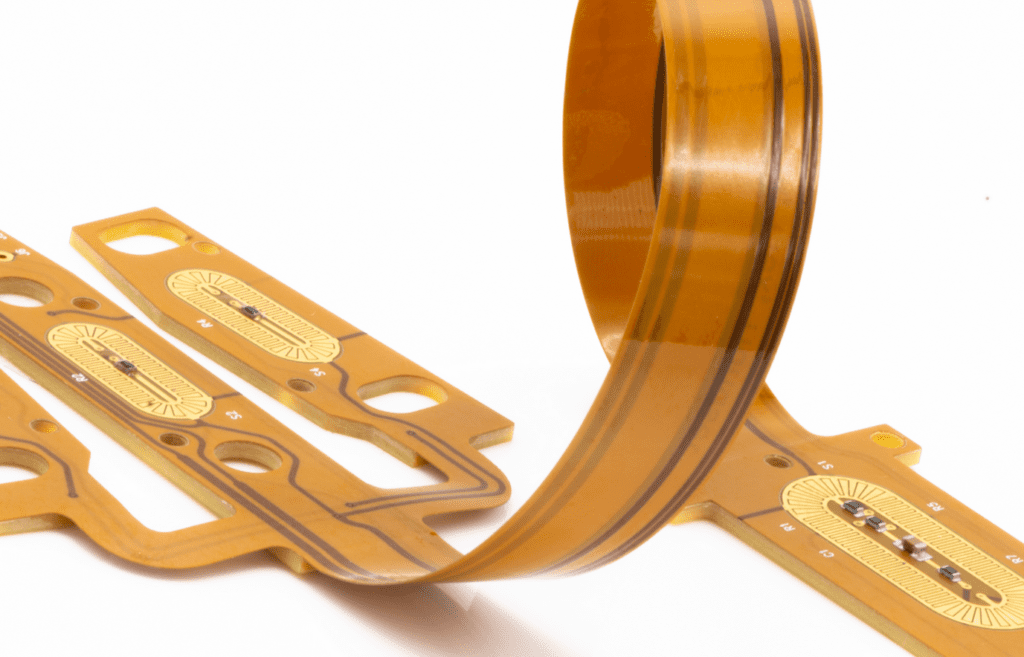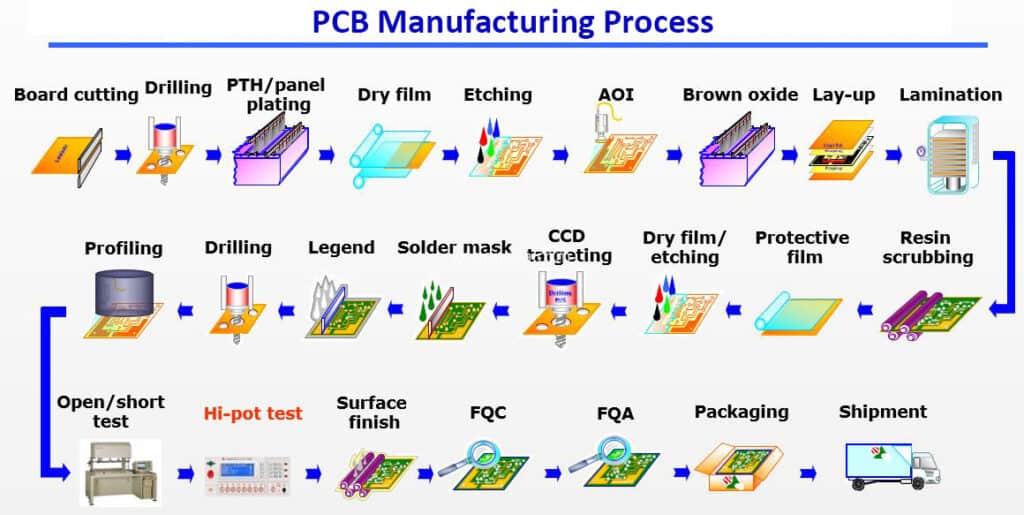Flexible circuit design is an essential part of modern electronic devices. These circuits are made up of flexible materials, such as polyimide or polyester, which allow them to bend and conform to the shape of the device they are used in. This flexibility is particularly useful in compact devices, where space is at a premium.
Flexible circuits are used in a wide range of applications, from consumer electronics to medical devices and aerospace technology. They can be found in everything from smartphones and tablets to pacemakers and spacecraft. The flexibility of these circuits allows them to be used in a variety of different form factors, making them an ideal choice for devices that need to be small and lightweight. Additionally, flexible circuits can be manufactured using a variety of different techniques, including additive manufacturing and roll-to-roll processing, which makes them a cost-effective choice for many applications.

Benefits of Flexible Circuit Design
Improved Reliability
Flexible circuit design offers several benefits over traditional rigid circuit boards. One of the most significant advantages is improved reliability. Flexible circuits are less prone to failure due to their ability to bend and flex without breaking. This makes them ideal for use in applications where the circuit board is subject to vibration or movement, such as in automotive or aerospace industries. In addition, flexible circuits can be designed to have fewer interconnects, which reduces the risk of failure due to poor connections.
Reduced Weight and Size
Another benefit of flexible circuit design is reduced weight and size. Flexible circuits are thinner and lighter than traditional rigid circuit boards, making them ideal for use in applications where space and weight are at a premium. In addition, flexible circuits can be designed to fit into tight spaces, allowing for more compact device designs.
Increased Flexibility
Flexible circuit design also offers increased flexibility. The ability to bend and flex the circuit board allows for more design options and greater freedom in device design. This flexibility also allows for easier installation and maintenance, as the circuit board can be bent and shaped to fit the available space.
In summary, flexible circuit design offers improved reliability, reduced weight and size, and increased flexibility. These benefits make flexible circuits ideal for use in a wide range of applications, from automotive and aerospace industries to consumer electronics and medical devices.
Design Considerations

When designing a flexible circuit, there are several key considerations that must be taken into account to ensure optimal performance and reliability. These include material selection, trace width and spacing, layer count, bend radius, and flexibility.
Material Selection
The choice of materials used in a flexible circuit design can have a significant impact on its performance. The most common materials used in flexible circuits are polyimide and polyester, both of which offer excellent flexibility and durability. Other factors to consider when selecting materials include temperature range, chemical resistance, and electrical properties.
Trace Width and Spacing
The width and spacing of traces on a flexible circuit can have a significant impact on its performance and reliability. In general, narrower traces and tighter spacing can allow for greater flexibility and more compact designs, but they can also increase the risk of signal interference and other issues. Careful consideration must be given to trace width and spacing when designing a flexible circuit.
Layer Count
The number of layers in a flexible circuit can have a significant impact on its performance and complexity. In general, more layers can allow for greater flexibility and more complex designs, but they can also increase the risk of signal interference and other issues. Careful consideration must be given to layer count when designing a flexible circuit.
Bend Radius
The bend radius of a flexible circuit refers to the minimum radius that the circuit can be bent without causing damage. In general, a smaller bend radius allows for greater flexibility and more compact designs, but it can also increase the risk of damage to the circuit. Careful consideration must be given to bend radius when designing a flexible circuit.
Flexibility
The flexibility of a flexible circuit refers to its ability to bend and flex without causing damage. In general, a more flexible circuit allows for greater flexibility and more compact designs, but it can also increase the risk of damage to the circuit. Careful consideration must be given to flexibility when designing a flexible circuit.
Manufacturing Process

When it comes to flexible circuit design, the manufacturing process is crucial to ensure the final product meets the desired specifications. The process involves several steps, including lamination, etching, drilling and plating, solder mask, and silkscreen.
Lamination
The lamination process involves bonding multiple layers of materials together to create a single flexible circuit board. The layers consist of copper, adhesive, and substrate. The copper layer is etched to create the circuit pattern, and the adhesive layer is used to bond the substrate and copper layers together.
Etching
Etching is the process of removing the excess copper from the circuit board, leaving only the desired circuit pattern. This process is achieved by using a chemical solution to dissolve the unwanted copper.
Drilling and Plating
After etching, the circuit board is drilled to create holes for component placement. The holes are then plated with a thin layer of copper to ensure electrical conductivity.
Solder Mask
The solder mask is a protective layer applied to the circuit board to prevent solder from flowing into unwanted areas during the assembly process. It also protects the board from environmental factors such as moisture and dust.
Silkscreen
The silkscreen process involves printing labels and markings onto the circuit board, such as component designations and company logos. This process is done using a specialized ink that is resistant to the harsh chemicals used during the manufacturing process.
Overall, the manufacturing process for flexible circuit design requires precision and attention to detail to ensure a high-quality final product. By following these steps, manufacturers can produce flexible circuit boards that meet the desired specifications and perform reliably.
Applications
Flexible circuits are used in a wide range of industries due to their unique properties such as light weight, flexibility, and durability. Here are some of the most common applications of flexible circuit design:
Consumer Electronics
Flexible circuits are widely used in consumer electronics such as smartphones, tablets, and laptops. They are used to connect various components such as display screens, touch sensors, and batteries. The flexibility of these circuits allows for compact designs, and they can be bent and folded to fit into tight spaces.
Medical Devices
Flexible circuits are also used in medical devices such as pacemakers, defibrillators, and hearing aids. They are used to connect various components and sensors, and their flexibility allows them to conform to the shape of the human body.
Automotive
Flexible circuits are used in the automotive industry for a variety of applications such as airbag sensors, dashboard displays, and engine control units. They are ideal for use in vehicles because of their ability to withstand vibrations and extreme temperatures.
Aerospace and Defense
Flexible circuits are also used in the aerospace and defense industries for applications such as communication systems, guidance systems, and radar systems. Their light weight and flexibility make them ideal for use in space and military applications.
In conclusion, flexible circuit design has a wide range of applications in various industries due to their unique properties. They are used in consumer electronics, medical devices, automotive, and aerospace and defense.
Future Developments

Flexible Hybrid Electronics
Flexible hybrid electronics (FHE) combines the flexibility and thinness of printed electronics with the high performance and functionality of traditional electronics. FHE is expected to revolutionize the electronics industry by enabling the creation of new products that are lightweight, flexible, and can be easily integrated into various surfaces. FHE technology is expected to be used in a wide range of applications, including health monitoring, smart packaging, and military equipment.
3D Printing
3D printing is a rapidly developing technology that is expected to have a significant impact on the production of flexible circuits. 3D printing technology allows for the creation of complex and intricate designs that are difficult to achieve using traditional manufacturing methods. The use of 3D printing technology in flexible circuit design is expected to reduce production costs and lead times, as well as enable the creation of more customized and personalized products.
Wearable Technology
Wearable technology is another area where flexible circuit design is expected to make significant advancements in the future. Wearable devices, such as smartwatches and fitness trackers, require flexible circuits that can bend and twist without breaking. Flexible circuit design is expected to enable the creation of more advanced wearable devices that are more comfortable, durable, and functional.
In conclusion, the future of flexible circuit design is bright, with new developments and advancements expected in the near future. The combination of FHE, 3D printing, and wearable technology is expected to lead to the creation of new and innovative products that will revolutionize the electronics industry.

